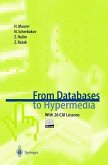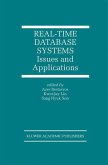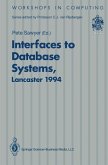This volume provides much-needed coverage of the technical background to the development of multimedia applications. Based on an advanced summer school run by the University of Twente, each chapter is written by an expert in a particular topic, including enabling technologies, operating systems, index structures for multimedia, and communication issues. There is also a comprehensive discussion of the factors which determine the success or failure of database applications in the real-world, based on new multimedia projects in Dutch industries and service companies. Multimedia Databases in Perspective is an advanced textbook aimed at final year undergraduate students, and MSc and PhD students studying databases, database management, information systems, and multimedia applications. It will also be of interest to researchers in the above areas, and DBMS developers working in the software industry.
During the last decade, multimedia has emerged as a major research and de velopment area. Pushed by advanced technology like huge-capacity storage de vices, fast networks, and powerful work stations, new applications have arisen. Many definitions of multimedia systems exist, one of them being computer sys tems that support interactive use of at least one of the following information sources: graphics, image, voice, sound, and video. These systems have caused a boom in the world of entertainment, but also in other business areas great opportunities for novel products and services are available. The size of multi media data is often huge, and the storage of huge amounts of data is a task normally allocated to database management systems. Although some modern database management systems offer facilities to support development of multi media applications, many problems related to multimedia support are still not well understood. This book reports on research efforts to solve some of these problems. An in troductory knowledge of databases, and also of operating systems and network technology is assumed. The book is very suitable as material for courses at senior or graduate level, but also for upgrading the skills of computer scientists working on database management systems, multimedia systems or applications. The book consists of four parts. Part I is called "Requirements for a Mul timedia Database" and comprises chapters one to three. Chapter one presents an outline of the book.
During the last decade, multimedia has emerged as a major research and de velopment area. Pushed by advanced technology like huge-capacity storage de vices, fast networks, and powerful work stations, new applications have arisen. Many definitions of multimedia systems exist, one of them being computer sys tems that support interactive use of at least one of the following information sources: graphics, image, voice, sound, and video. These systems have caused a boom in the world of entertainment, but also in other business areas great opportunities for novel products and services are available. The size of multi media data is often huge, and the storage of huge amounts of data is a task normally allocated to database management systems. Although some modern database management systems offer facilities to support development of multi media applications, many problems related to multimedia support are still not well understood. This book reports on research efforts to solve some of these problems. An in troductory knowledge of databases, and also of operating systems and network technology is assumed. The book is very suitable as material for courses at senior or graduate level, but also for upgrading the skills of computer scientists working on database management systems, multimedia systems or applications. The book consists of four parts. Part I is called "Requirements for a Mul timedia Database" and comprises chapters one to three. Chapter one presents an outline of the book.









